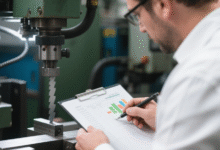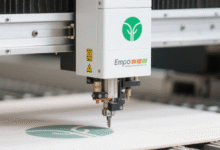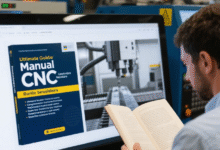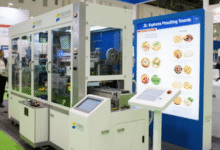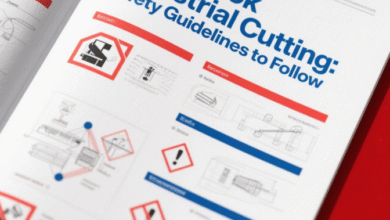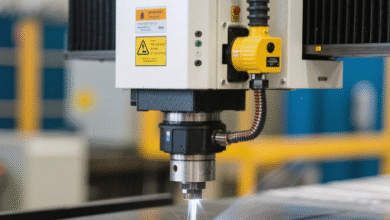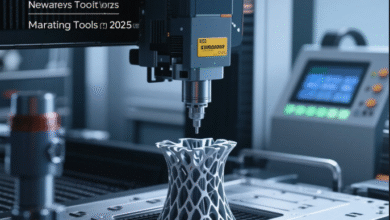The Role of Robotics in Industrial Cutting
Advertisement
Introduction
The advancement of technology has revolutionized the industrial sector, especially in the field of cutting. Robotics has played a significant role in enhancing the efficiency and precision of industrial cutting processes. This article delves into the various aspects of robotics in industrial cutting, exploring its strengths, weaknesses, and the impact it has on manufacturing operations.
What is Industrial Cutting?
Industrial cutting refers to the process of separating materials into smaller pieces or shapes to meet specific requirements. This can involve cutting a wide range of materials such as metal, plastic, wood, and fabric. Industrial cutting is a crucial element in various industries, including automotive, aerospace, and construction.
The Evolution of Robotics in Industrial Cutting
Robotic technology has significantly advanced over the years, leading to its widespread adoption in industrial cutting applications. In the past, manual cutting processes were labor-intensive and often prone to errors. The introduction of robotics has transformed the cutting industry by offering automated solutions that are faster, more accurate, and cost-effective.
The Advantages of Robotics in Industrial Cutting
One of the key strengths of robotics in industrial cutting is its unparalleled precision. Robots can perform complex cutting tasks with a high degree of accuracy, ensuring consistent results every time. This level of precision is essential in industries where quality control is paramount, such as aerospace and medical device manufacturing.
The Challenges of Implementing Robotics in Industrial Cutting
While robotics offer numerous benefits in industrial cutting, there are also challenges associated with their implementation. One of the primary concerns is the initial cost of investing in robotic technology. Companies may hesitate to adopt robotics due to the high upfront expenses involved in purchasing and installing robotic systems.
The Impact of Robotics on Production Efficiency
Robotics have had a profound impact on production efficiency in industrial cutting operations. By automating repetitive cutting tasks, robots can significantly reduce production time and improve overall output. This increased efficiency allows manufacturers to meet customer demands more effectively and stay ahead of the competition.
The Role of Artificial Intelligence in Robotics
Artificial intelligence (AI) has further enhanced the capabilities of robotics in industrial cutting. AI algorithms enable robots to adapt to different cutting materials and patterns, making them more versatile and intelligent. This integration of AI with robotics has opened up new possibilities for innovation in cutting technology.
Strengths and Weaknesses of Robotics in Industrial Cutting
Strengths
1. Precision: Robots offer unmatched precision in industrial cutting tasks, ensuring consistent and accurate results.
2. Efficiency: Robotics automation speeds up cutting processes, leading to increased production efficiency and output.
3. Safety: Robots can handle dangerous cutting tasks that may pose risks to human workers, enhancing workplace safety.
4. Flexibility: Robotic systems can be programmed to perform a variety of cutting tasks, making them versatile for different production needs.
5. Quality Control: With precise cutting capabilities, robots help maintain high standards of quality control in manufacturing operations.
6. Cost Savings: While the initial investment in robotics may be high, the long-term cost savings from increased efficiency and reduced material waste justify the expense.
7. Innovation: Robotics technology is continuously evolving, driving innovation in industrial cutting processes and pushing the boundaries of what is possible.
Weaknesses
1. Initial Cost: The upfront costs of implementing robotic systems can be prohibitive for some companies, especially small to medium-sized enterprises.
2. Maintenance: Robots require regular maintenance and upkeep to ensure optimal performance, adding to the overall operating costs.
3. Programming Complexity: Programming robots for specific cutting tasks can be complex and time-consuming, requiring skilled technicians to operate them effectively.
4. Dependence on Power Supply: Robotic systems rely on a stable power supply to function, making them vulnerable to power outages or disruptions.
5. Adaptability: Robots may have limitations in adapting to unexpected changes in cutting materials or conditions, requiring human intervention in some cases.
6. Integration Challenges: Integrating robotics with existing cutting equipment and processes can be challenging and may require significant modifications to workflow.
7. Ethical Concerns: The rise of robotics in cutting may raise ethical questions about the impact on employment opportunities for human workers and the role of automation in the workforce.
The Role of Robotics in Industrial Cutting: A Comprehensive Overview
What is the Role of Robotics in Industrial Cutting?
The role of robotics in industrial cutting is to enhance cutting processes through automation, precision, and efficiency. Robots are used to perform a wide range of cutting tasks, from simple to complex, with a high level of accuracy and repeatability.
How do Robots Impact Industrial Cutting Operations?
Robots have a significant impact on industrial cutting operations by streamlining production processes, reducing human error, and improving overall efficiency. With robotic automation, manufacturers can achieve faster turnaround times, lower costs, and higher quality output.
What are the Different Types of Robotic Cutting Technologies?
There are several types of robotic cutting technologies available, including laser cutting, waterjet cutting, plasma cutting, and abrasive cutting. Each type of cutting technology offers unique benefits and applications, depending on the materials being cut and the desired results.
How is Artificial Intelligence Integrated with Robotic Cutting Systems?
Artificial intelligence is integrated with robotic cutting systems through algorithms that enable robots to learn, adapt, and optimize cutting processes. AI algorithms analyze cutting data in real-time, making adjustments to improve cutting efficiency and accuracy.
What are the Main Considerations When Implementing Robotics in Industrial Cutting?
When implementing robotics in industrial cutting, companies should consider factors such as cost, ROI, training, safety, and maintenance. It is essential to assess the specific needs of the operation and choose robotic solutions that align with production goals.
How Can Robotics Improve Cutting Quality and Consistency?
Robotic systems excel in improving cutting quality and consistency by eliminating human error and variations. Robots can perform precise cuts repeatedly, ensuring that each finished product meets the desired specifications and quality standards.
What are the Future Trends in Robotics for Industrial Cutting?
The future of robotics in industrial cutting is promising, with advancements in AI, machine learning, and automation technologies. Robotics are expected to become more intelligent, adaptable, and efficient, leading to further optimization of cutting processes and increased productivity.
Conclusion
As robotics continue to play a crucial role in industrial cutting operations, companies must embrace this technology to stay competitive in the global market. The strengths of robotics, such as precision, efficiency, and safety, far outweigh their weaknesses, making them essential tools for modern manufacturing. By harnessing the power of robotics, companies can enhance their cutting processes, improve quality control, and drive innovation in industrial cutting.
Take Action Now
If you’re considering implementing robotics in your industrial cutting operations, now is the time to take action. Evaluate your cutting processes, research robotic solutions, and consult with experts to find the best fit for your business. Embracing robotics can transform your cutting operations, increase efficiency, and elevate your production capabilities to new heights.
Disclaimer
The information provided in this article is for educational and informational purposes only. The role of robotics in industrial cutting may vary depending on the specific needs and requirements of each operation. It is essential to conduct thorough research and consult with industry professionals before implementing robotic solutions in your cutting processes. The author does not endorse any specific robotics products or companies mentioned in this article.

